DOH Medicaid Update February 2005 Vol. 20, No. 2
Office of Medicaid Management
DOH Medicaid Update
February 2005 Vol.20, No. 2
State of New York
George E. Pataki, Governor
Department of Health
Antonia C. Novello, M.D., M.P.H., Dr. P.H.
Commissioner
Medicaid Update
is a monthly publication of the
New York State Department of Health,
Office of Medicaid Management,
14th Floor, Room 1466,
Corning Tower, Albany,
New York 12237
Table of Contents
eMedNY: Remittance Advice Transactions 820 & 835
Lawsuit Decision - Provider Assistance Needed: Aliessa/Adamolekun et. al. vs. Novello
Managed Care Enrollee Pharmacy Co-Payment Changes
Your Provider Manual is Going Online!
NYC Transportation Ordering Providers: Ordering Transportation Services in NYC
Gifts, Inducements and Remuneration
New Coverage Codes for Resource Attestation - Start Date of 29 Days of Short-Term Rehabilitation
Act in Time: Recognize Heart Attack Signs
Patient Educational Tools: Do Something Nice for Your Heart - Exercise!
eMedNY: Changes to Paper Claim Forms
Provider Services
Major enhancements will be made to the Medicaid program on March 23 with the implementation of eMedNY (Phase II). Will you be ready?
Invitations were sent to 66,000 providers for training on the new system.
Only 4,500 providers enrolled in the training sessions!
Hopefully, you have already attended a training session, and have made the changes needed to be ready for the conversion.
If not, you may be unable to successfully submit your claims for Medicaid payments following the conversion!
If you have an interest in training sessions,
please call Computer Sciences Corporation's Provider Services at:
800-522-5518 or (518) 447-9860.
Because of the low volume of attendance, we are interested in identifying additional training requirements.
We also suggest that you visit our websites frequently www.emedny.org and www.nyhipaadesk.com for updates on the changes required for eMedNY Phase II.
eMedny Update
All Providers
This article is a reprint from the December 2004 Medicaid Update
Remittance Advices
eMedNY Transactions 820 and 835
Return to Table of Contents
Providers will still have the alternate choice of receiving paper remittance advices; however, if you choose the electronic transactions 835 or 820, you will not receive paper remittance advices.
Upon implementation of Phase II in March 2005:
- eMedNY will not produce remittance advices on round reel tape or cartridge.
- eMedNY remittance advices (835 and 820 transactions) will be delivered as electronic response files through the eMedNY eXchange.
Even if you submit certain claims on paper forms, these will be included in the electronic 835/820.
Providers who submit claims under multiple Electronic Transmitter Identification Numbers (ETIN) will receive multiple 835/820 transactions and multiple checks; i.e., one advice and one check will be issued to the provider for each ETIN that submitted claims.
This will eliminate the current requirement of a single check remittance since providers will now receive separate multiple checks and remittances. Additionally, remittance advices (electronic or paper) will contain a maximum of 10,000 claim lines. Any excess will be carried over to additional remittance advice(s). Each remittance advice will have a corresponding check.
Providers who submit claims under multiple ETINs, and receive the 835 or the 820, must choose a primary ETIN for the purpose of receiving retroactive adjustment advices (rate-based providers) and claims submitted on paper forms (any provider).
Providers who do not choose a primary ETIN will not be able to receive information regarding retroactive adjustments or claims submitted on paper, since eMedNY will not be able to link this information to any specific ETIN.
For questions regarding this matter, please call CSC at (800) 522-5518 or (518) 447-9860.
Would You Like Future Medicaid Updates Emailed To You?
Return to Table of Contents
You will receive the Update about 3 weeks before the mailed copy!
Email your request, along with your provider identification number (found on the mailing address label of the update) to: MedicaidUpdate@health.state.ny.us.
Let us know if you want to continue receiving the hard copy in the mail, in addition to the emailed copy.
Lawsuit Decision:
Provider Assistance Needed
Aliessa/Adamolekun et. al. v. Novello
Return to Table of Contents
The New York State Department of Health has announced the settlement of the court case Aliessa/Adamolekun v. Novello. This case addressed the level of Medicaid benefits certain immigrants received in New York.
As a result, retroactive Medicaid benefits may be available for certain immigrants who were unable to get Medicaid from September 12, 1997, until August 5, 2004.

- Qualified immigrants formerly subject to the five year ban on Medicaid eligibility and immigrants who are Permanently Residing in the United States under Color of Law (PRUCOL) may be eligible for Medicaid, Family Health Plus and Child Health Plus A.
- Immigrants who are determined to be class members may also be eligible for reimbursement or payment of doctors' and other medical bills for care and services received on or after September 12, 1997, and no later than August 5, 2004.

The Department is mailing letters to potential class members advising them how they may apply for reimbursement or payment of medical bills.
Provider Involvement
You may receive requests from potential class members for copies of old paid and unpaid medical bills. Please promptly provide potential class members, upon their request, with copies of any paid and unpaid medical bills for which they seek reimbursement as Aliessa/Adamolekun class members.
Questions concerning this matter should be directed to Shirley Race at (518) 473-5330.
For claiming questions/billing questions call your CSC Healthcare Systems representative at:
Practitioner Services: (800) 522-5518 or (518) 447-9860
Institutional Services: (800) 522-1892 or (518) 447-9810
Professional Services: (800) 522-5535 or (518) 447-9830
A MESSAGE FROM THE AMERICAN LUNG ASSOCIATION
CITY OF NEW YORK
Return to Table of Contents
The American Lung Association of the City of New York provides lung health education, advocacy and research throughout the five boroughs of the City of New York, including a comprehensive tobacco control program, such as Freedom From Smoking cessation clinics and one-on-one counseling for adults and teens.
For more information, please contact the Association at:
(212) 889-3370 or visit their website at
www.alany.org

Managed Care Enrollee
Pharmacy Co-Payment Changes
PHARMACIES
and
MEDICAID MANAGED CARE PLANS
Return to Table of Contents
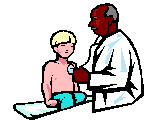
As a result of recent changes in State Law, enrollees in Medicaid managed care plans are subject to Medicaid co-payments for pharmacy items.
Beginning April 1, 2005, enrollees in Medicaid managed care plans will have pharmacy co-payments as described below:
| ITEM | CO-PAYMENT AMOUNT | DETAILS ABOUT CO-PAYMENT |
| Brand-Name Prescription Drugs | $2.00 | One co-payment charge for each new prescription and for
each refill NO CO-PAY FOR: Drugs to treat mental illness (psychotropic), tuberculosis, and birth control. |
| Generic Prescription Drugs | $0.50 | One co-payment charge for each new prescription and for each refill NO CO-PAY FOR: Drugs to treat mental illness (psychotropic), tuberculosis, and birth control. |
| Over-the-Counter Medications | $0.50 | One co-payment charge for each item ordered by a recognized practitioner NO CO-PAY FOR: Birth control items. |
Consistent with fee-for-service Medicaid, the annual co-payment maximum per recipient per year is $100. The benefit year begins April 1 and ends on March 31 of the following year. Once the maximum has been reached, no co-payments will be required until the new benefit year begins.
CO-PAYMENT EXEMPTIONS
The same co-payment exemptions that apply to Medicaid fee-for-service recipients also apply to Medicaid managed care enrollees.
Medicaid managed care enrollees who cannot afford to pay and tell the pharmacist that they are unable to pay must be provided with the ordered pharmacy items. The pharmacy cannot refuse to provide pharmacy items because of a recipient's inability to pay. (Recipients still owe the unpaid co-pay amounts to the pharmacy and may be asked to pay or may be billed.)
Co-payment exemptions include:
- Recipients younger than 21 years old.
- Recipients who are pregnant.
Pregnant women during pregnancy and for the two months after the month in which the pregnancy ends. - Family planning (birth control) services. This includes family planning drugs or supplies like birth control pills and condoms.
- Residents of an Adult Care Facility licensed by the New York State Department of Health (DOH).
- Residents of a Nursing Home.
- Residents of an Intermediate Care Facility for the Developmentally Disabled (ICF/DD).
- Residents of an Office of Mental Health (OMH) or Office of Mental Retardation and Developmental Disabilities (OMRDD) certified residences.
- Enrollees in a Comprehensive Medicaid Case Management (CMCM) or Service Coordination Program.
- Enrollees in an OMH or OMRDD Home and Community Based Services (HCBS) Waiver Program.
- Enrollees in a DOH HCBS Waiver Program for Persons with Traumatic Brain Injury (TBI).
NOTE: Recipients who are eligible for both Medicare and Medicaid and/or receive Supplemental Security Income (SSI) payments are not exempt from Medicaid co-payments, unless they also fall into one of the groups listed above.
Questions regarding the New York State Medicaid Recipient Co-Payment Program should be directed to the Medicaid Helpline at (800) 541-2831.
Your Provider Manual Is Going Online!
Return to Table of Contents
The Department is beginning to make provider manuals available on the internet at:
www.emedny.org/providermanuals/index.html
Up to this time, the Medicaid program has relied on a paper provider manual.

- Upon enrollment, the new provider would receive a plastic binder containing policy and billing information.
- When a change was made to the manual, replacement pages would be mailed to the affected provider group(s).
Now, the Department is making an effort to update all manuals and migrate the material to the eMedNY website! New providers will no longer receive the binder of material, nor will changes to existing manuals be mailed to providers. Rather, all necessary information will be available online.
Manuals can be printed, and downloaded to your own computer!
The website is structured in a practical manner:
"Information for All Providers" contains general policy and reference information, along with both general and specific billing information. This information has been updated-all providers should view and read this information!
This information has been updated - all providers should view and read this information!
Specific provider manuals are listed. Each of these manuals contains:
- policy information specific for that provider category,
- billing instructions, and,
- pertinent procedure codes and fee schedules.
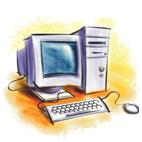
When a change is made to a section of a manual, the change will be incorporated into the manual, and will become the featured manual. The previous manual will be archived, with a reason stating what change was made to the manual to make the manual "out-of-date." This archived manual will continue to be available to you, so that you will always have access to past policy and billing information.
Manual information is being published to the website sequentially. Along with the "Information for All Providers," the following manuals are currently available:
- Vision Care
- Transportation
- Home and Community Based Waiver Services (OMRDD)
- Midwife
- Durable Medical Equipment
Soon, the following additional manuals will be available:
- Physician
- Clinical Psychology
- Home and Community Based Waiver Services (Traumatic Brain Injury)
- Pharmacy
- PersonalCare
- Child Care
- Laboratory
- Personal Emergency Response Systems
Remaining provider manuals are scheduled to be updated. Certain fee schedules will soon be available, as well as specific billing information for all provider groups.
Place the website address above in your browser's "Favorites" folder, and periodically check on changes to your manual!
Questions? Contact the Bureau of Program Guidance at (518) 474-9219.
Attention
New York City
Transportation
Ordering
Providers
ORDERING TRANSPORTATION SERVICES
IN NEW YORK CITY
CHANGES ARE COMING IN MARCH 2005!
Return to Table of Contents
This article addresses three major topics of concern facing the transportation ordering providers when ordering transportation in New York City:
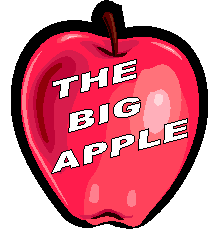
- guidelines for ordering transportation;
- new scannable forms;
- new procedure codes.
I see the word "new" a lot...
That's because on March 24, 2005, the current Medicaid Management Information System (MMIS), which processes transportation prior authorization requests and pays provider claims, will be replaced by a new prior authorization and claims system called eMedNY.
How does this affect me?
The change to the new system means changes to some practices associated with the old system. Specifically, you will need to use new forms and new transportation procedure codes when ordering transportation.
Guidelines for Ordering Transportation
Current guidelines for ordering transportation do not change as we transition to eMedNY. Here are the guidelines for you to follow when ordering transportation.
Certain conditions may demonstrate the possible need for a certain transportation service. However, the functional ability and independence of the Medicaid recipient should also be considered when determining the mode of transportation required.
Livery, ambulette and ambulance transportation of recipients is to be ordered only by specific medical practitioners:
| Livery and Ambulette | Ambulance |
| Physician, Physician's Assistant | Physician, Physician's Assistant |
| Nurse Practitioner | Nurse Practitioner |
| Podiatrist | |
| Optometrist | |
| Dentist |
- Clinics, hospitals and other medical facilities are allowed to order transportation on behalf of the above-named providers; however, evidence of the need for such transportation should be documented by one of the above practitioners.
Guidelines for Ordering Livery Transportation
- The recipient is able to travel independently but, due to a debilitating physical or mental condition, cannot use the mass transit system.
- The recipient is traveling to and from a location which is inaccessible by mass transit.
- The recipient cannot access the mass transit system due to temporary severe weather, which prohibits use of the normal mode of transportation.
Guidelines for Ordering Ambulette Transportation
- The recipient requires the personal assistance of the driver in entering and exiting the recipient's residence, the ambulette, and the medical facility.
- The recipient is wheelchair-bound (non-collapsible or requires a specially configured vehicle).
- The recipient has a mental impairment and requires the personal assistance of the ambulette driver.
- The recipient has a severe, debilitating weakness or is mentally disoriented as a result of medical treatment and requires the personal assistance of the ambulette driver.
- The recipient has a disabling physical condition which requires the use of a walker, cane, crutch or brace and is unable to use a livery service or mass transit.
Guidelines for Ordering Non-Emergency Ambulance Transportation
- The recipient must be transported on a stretcher and/or requires the administration of life support equipment by trained medical personnel. The use of a non-emergency ambulance is indicated when the recipient's condition would prohibit any other form of transport.
New Transportation Ordering Forms
Orderers of New York City transportation have two methods to order transportation:
- For no more than six different recipients, the medical practitioner can call (800) 243-7842 and place the order.
- Orderers can complete transportation ordering forms and mail the forms to Computer Sciences Corporation.
Currently, two different forms are used to order transportation:
- Day Program Group Transportation Prior Approval (DSS-4106) form is used when ordering regularly recurring group transportation to day programs.
- Transportation Prior Approval (DSS-3897) form is used when ordering ad hoc, episodic non-emergency transportation.
Both forms are designed to record the essential information needed to data-enter a transportation request. The forms are produced in triplicate, with one copy going to the transportation provider, one copy going to the ordering provider, and one copy going to Computer Sciences Corporation (CSC).
Both of these currently used forms will become obsolete on March 24, 2005. They will be replaced by new scannable forms that capture the same information as you currently record:
- The Multi-Client Single-Ride Transportation Order form (eMedNY 389701); and,
- The Multi-Client Group Transportation to Day Programs Order form (eMedNY 410601).
Beginning Monday, March 14, 2005, you must use these new forms when ordering transportation.
If you use the old form, and it is received by Computer Sciences Corporation after Wednesday, March 23, 2005, the form will be returned to you, with instructions to use the new form.
Where Can I Get These Scannable Forms?
Due to the multitude of New York City ordering providers, we will ask transportation providers to provide you with the scannable forms. These forms will be available late February 2005.
Why can't we get the new forms until February? Our hope is that the closer we get to the eMedNY implementation date of March 24, 2005, the less chance there is for confusion on when to use the new forms.
Procedure Codes
Effective March 24, 2005, the current transportation procedure codes will be replaced by new codes.
The following procedure codes should be used for ordering transportation of New York City Medicaid recipients:
| Ambulance (non-emergency) | ||
| Current Code | eMedNY Code | Description |
| 66211 | A0425 | Ground mileage per statute mile |
| 66202 | A0426 | Advanced Life Support |
| 66201 | A0428 | Basic Life Support |
| Ambulette | ||
| Current Code | eMedNY Code | Description |
| 66101 | NY100 | One way trip inside Common Medical Marketing Area (CMMA) |
| 66103 | NY102 | One way trip outside CMMA |
| 66111 | NY103 | Mileage |
| Livery | ||
| Current Code | eMedNY Code | Description |
| 66501 | NY200 | One Way inside CMMA |
| 66502 | NY202 | One way outside CMMA |
| Group Transports to Day Programs | ||
| Current Code | eMedNY Code | Description |
| 66601 | NY217 | Group Ride one way ambulatory per person |
| 66602 | NY218 | Group Ride one way wheelchair per person |
How Can I Submit My Orders Correctly?
- Never use the new scannable forms with the old procedure codes.
- Never use the old triplicate forms with the new eMedNY procedure codes.
- Transition date is Monday, March 14, 2005:
- Orders placed prior to Monday, March 14, 2005 should be placed on the old triplicate forms.
- Orders placed on or after Monday, March 14, 2005 should be placed on the new scannable forms.
- Orders placed prior to Monday, March 14, 2005 should be placed on the old triplicate forms.
- Since the new forms are scannable, the original form must be submitted to CSC. Feel free to make as many copies as necessary. However, if the original form is not submitted to CSC, it will be returned to the ordering provider.
Questions can be directed to the Provider Resource Unit at (518) 474-9219, or
via email to MedicaidUpdate@health.state.ny.ussubject line: NYC Ordering Provider.
Fraud impacts all taxpayers.
Do you suspect that a recipient or a provider has engaged in fraudulent activities?
Please call:
1-877-87FRAUD
Your call will remain confidential.

GIFTS, INDUCEMENTS
& REMUNERATION
Return to Table of Contents
This is a reminder of the information that appeared in the January 2004 Medicaid Update concerning Gifts, Inducements and Remunerations (any remuneration).
PHARMACIES
Under Department of Health (DOH) regulations and Board of Regents rules (Part 29) involving pharmacy unprofessional conduct, owners of pharmacies, pharmacists or their employees cannot offer any remuneration to a Medicaid beneficiary if the person knows or should know that the offer or transfer is likely to influence the beneficiary's selection of a provider of Medicaid items or services.

Any remuneration can include advertised waiver of co-payments/coinsurance, cash or cash equivalents, gifts such as cell phones, pagers and the transfer of items for free or for other than fair market value. We have confirmed with the State Board of Pharmacy that there are no monetary exemptions permitted under the Board of Regents rules concerning unprofessional conduct. The only potential exception to this policy for pharmacy providers is the provision of an item or device to a beneficiary which is directly related to the administration of medication for that person, or waiver of Medicaid co-payments based on the recipient's inability to pay.
OTHER PROVIDERS
Other providers should review the rules and regulations for their particular professions regarding the prohibition/regulation of inducements. The failure to adhere to these regulations could result in termination as a Medicaid provider. You should be advised that state policy under 18 NYCRR Part 515, prohibits the furnishing of inducements by a Medicaid provider. For non-pharmacy providers, there are no exceptions to this policy.
ACTION
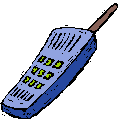
If you suspect that a provider has engaged in any of the activities listed above or any other questionable activity, please call the Medicaid Fraud Hotline at(877) 87FRAUD, (877-873-7283). Your call will remain confidential. DOH can exclude or terminate the enrollment of any pharmacy that is in violation of this policy.
QUESTIONS
Concerning potential unprofessional conduct by pharmacies?
Contact the Executive Secretary for the State Board of Pharmacy, Lawrence Mokhiber, at (518) 474-3848.
Concerning whether an item or device provided to a Medicaid recipient is in support of the administration of medication?
Contact the Medicaid Pharmacy Policy and Operations Unit at (518) 486-3209.
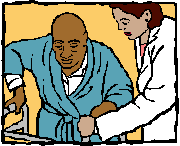
New Coverage Codes for Resource Attestation
Start Date of 29 Days of Short-Term
Rehabilitation
Return to Table of Contents
As announced in our July 2004 and August 2004 Medicaid Update, new coverage codes were developed for applicants who are not seeking coverage of long-term care services.
Individuals who are not seeking coverage of long-term care services are allowed to attest to the amount of their resources, rather than provide proof. Individuals may also attest to the amount of their resources and qualify for short-term rehabilitation services.
Short-term rehabilitation includes:
- one period of Certified Home Health Agency (CHHA), up to a maximum of 29 consecutive days in a twelve-month period; and
- one short-term nursing home admission, up to a maximum of 29 consecutive days in a twelve-month period. A recipient may receive one of each type of service for a total of 58 days. The following clarifies the start date of the 29-days of short-term rehabilitation.
Short-term rehabilitation begins on the first day the applicant/recipient receives CHHA services or is admitted to a nursing home on other than a permanent basis, regardless of the payer of the care and services. In other words, if the individual has third-party health insurance for nursing home care or CHHA services, or is paying privately, the 29-day short-term rehabilitation limitation still begins on the first day the individual receives CHHA services or is admitted to a nursing home.
Example:
A recipient is admitted to a nursing home for rehabilitation on November 8, 2004. Medicare covers November 8 through 27 (20 days) in full. Medicaid coverage for short-term rehabilitation is available starting November 28 through December 6 (the remaining 9 days of the short-term rehabilitation allowance).
Note: If the individual was not in receipt of Medicaid upon admission and applied for Medicaid coverage to begin December 1 (not retroactive to November), November 8 would still count as day one of the short-term rehabilitation.
If an individual does not apply for Medicaid coverage for a commencement of CHHA services or nursing home admission, that commencement/admission is not counted toward the one commencement/admission limit per 12-month period.
Example:
An individual applies for Medicaid coverage for a three-week nursing home stay which began on September 4, 2004. Six months ago the individual had a short-term nursing home stay but did not apply for Medicaid. Medicaid coverage for short-term rehabilitation is available starting September 4, 2004.
If you have any questions concerning Medicaid coverage of short-term rehabilitation under one of the new coverage codes, please contact the Medicaid eligibility staff at (518) 474-8887.
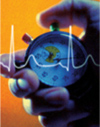
Act in Time to Heart Attack Signs
Return to Table of Contents
In the fall of 2001, The American Heart Association and the National Heart, Lung, and Blood Institute (NHLBI) launched a new Act in Time campaign to:
- Urge physicians to educate their patients about heart attack warning signs;
- Stress the importance of calling for emergency medical assistance immediately at the onset of heart attack warning signs.
According to Claude Lenfant, MD, Director of NHLBI, at the onset of the Act in Time campaign, "Most potential heart attack victims wait at least two - and possibly four - hours before seeking medical help and some wait a day or more".
One reason people wait before getting help is that they do not realize they are having a heart attack because their symptoms do not match the sudden crushing chest pain depicted in the movies - the so-called "Hollywood heart attack."
Rapid Early Action for Coronary Treatment
The Act in Time campaign is based on the results of Rapid Early Action for Coronary Treatment (REACT), the first large-scale study to evaluate the effects of education on the time it takes people to recognize the warning signs of a heart attack and seek appropriate help.
REACT, which was funded by NHLBI and developed under the auspices of the Institute's National Heart Attack Alert Program (NHAAP), concluded the following:
- Relatively few patients call emergency medical services when experiencing chest pain.
- Few people are aware of the benefits of early treatment, in part because they have little communication with their physicians about heart attack symptoms and survival.
Building a Healthier Nation - Healthy People 2010
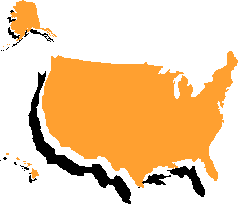
Act in Time is one of several cooperative educational efforts being carried out by the NHLBI and the American Heart Association under a broad partnership with other organizations dedicated to helping achieve the objectives of Healthy People 2010, the Federal government's blueprint for building a healthier nation, by:
- Raising awareness of heart attack symptoms;
- Increasing the number of patients treated in the first hour after symptoms begin; and
- Improving access to emergency care.
Education
Act in Time provides various educational materials for health care providers, heart attack patients and the public. These include:
- A booklet;
- An educational video; and
- New Web pages, which can be reached through the NHLBI Web site: www.nhlbi.nih.gov
Act in Time materials list the most common heart attack warning signs:
- Pain or discomfort in the center of the chest;
- Discomfort in one or both arms, back, neck, jaw, or stomach;
- Shortness of breath; and
- Other signs (breaking out in a cold sweat, nausea, and light-headedness).
Emergency Numbers
If you live in a community with a single emergency number, just dial 9-1-1.
If your community does not have the 9-1-1 emergency number, keep the emergency medical services number near your telephone, for quick reference, to dial in a medical emergency.
Additional Information
For additional information on the Act in Time to Heart Attack Signs campaign and related topics, go to the following Web sites: www.nhlbi.nih.gov; www.americanheart.org; www.redcross.org; www.ncoa.org.
Source: http://www.nhlbi.nih.gov/new/press/01-09-10.htm
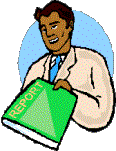
PATIENT EDUCATIONAL TOOLS
Return to Table of Contents
This month's patient educational tools features
an article on
Exercise, It's Good for Your Heart
The Medicaid program encourages practitioners to copy and distribute the following information to their patients and to share it with their colleagues.
__________________________________________________________________________
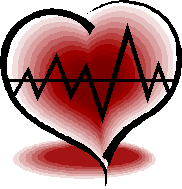


EXERCISE!
Exercise is important not just for your heart's well-being, but to help prevent other diseases.
Why exercise?
An inactive lifestyle increases the chances of becoming overweight and developing a number of chronic illnesses.
Regular physical activity:
- Improves your chances of living longer and living healthier;
- Helps protect you from developing heart disease or its pre-existing conditions, high blood pressure and high cholesterol;
- Helps protect you from developing certain cancers, including colon and breast cancer;
- Helps prevent or control type 2 diabetes or what was once called adult onset diabetes;
- Helps prevent arthritis and may help relieve pain and stiffness in people with this condition;
- Helps prevent the loss of bone known as osteoporosis;
- Reduces the risk of falling among older adults;
- Relieves feelings of depression and anxiety and improves mood;
- Decreases appetite;
- Gives a person more energy;
- Produces a more restful sleep.




Always check with your health care provider before
starting new physical activity or an exercise routine.
Prepared by the NYSDOH, Office of Medicaid Management, Bureau of Program Guidance
eMedNY
Update
All Providers
This article is a reprint from the November 2004 Medicaid Update
Do You Submit Paper Claim Forms?
Return to Table of Contents
Paper forms will undergo significant changes with the implementation of Phase II in March 2005.
The new forms are required to:
- accommodate systems changes, and
- to comply with the Centers for Medicare and Medicaid Services (CMS) regulations.
NYS Form A , HCFA-1500, and Pharmacy forms:
- will be accepted with modifications in format and provider-type users.
NYS Form B and Form C:
- will be discontinued.
The standard CMS UB-92 form
- will be adopted for rate-based providers.
The current Prior Authorization/Prior Approval forms:
- will be modified.
The current Threshold Override Application (TOA) form;
- will be modified.
Samples of the new paper forms for Phase II are available at www.emedny.org in the "Phase II Paper Forms" section.
Claim Form A
This form will be required, with modifications, only for dental billing (categories of service 0180, 0200, and (0287 or 0160 with specialty 912) and transportation billing (categories of service 0601, 0602, 0603, 0605, 0606).
HCFA-1500
The modified version of this form will be required for the current users and for the fee-for-service provider types currently using Form A and Form C.
| Service Category Code | Service Category Name | Current Form | eMedNY Form (modified) |
|---|---|---|---|
| 0140 | QMB Chiropractor & Portable X-ray | NYS-HCFA 1500 | NYS-HCFA 1500 |
| 0162 | Clinic-based Ordered Ambulatory | Claim Form A | NYS-HCFA 1500 |
| 0163, 0389 | Ordered Ambulatory Part A & B (other than Lab) | Claim Form A | NYS-HCFA 1500 |
| 0164, 0261, 0262, 0283, 0321-0325, 0386, 0387, 0442, 0443, 0604 | DME and Hearing Aid | Claim Form C | NYS-HCFA 1500 |
| 0281 | Hospital-based Ordered Ambulatory Lab | NYS-HCFA 1500 | NYS-HCFA 1500 |
| 0282 | Hospital-based Ordered Ambulatory (Other than Lab) | NYS-HCFA 1500 | NYS-HCFA 1500 |
| 0401, 0402, 0404, 0405, 0407, 0408, 0422, 0423 | Vision Care | NYS-HCFA 1500 | NYS-HCFA 1500 |
| 0460 | Physician | NYS-HCFA 1500 | NYS-HCFA 1500 |
| 0469 | Nurse Practitioner | NYS-HCFA 1500 | NYS-HCFA 1500 |
| 0500 | Podiatrist | NYS-HCFA 1500 | NYS-HCFA 1500 |
| 0521 | Nurse LPN | Claim Form A | NYS-HCFA 1500 |
| 0522 | Nurse RN | Claim Form A | NYS-HCFA 1500 |
| 0523 | Hospital Registry LPN | Claim Form A | NYS-HCFA 1500 |
| 0524 | Hospital Registry RN | Claim Form A | NYS-HCFA 1500 |
| 0525 | Midwife | Claim Form A | NYS-HCFA 1500 |
| 0560 | Clinical Social Worker | NYS-HCFA 1500 | NYS-HCFA 1500 |
| 0580 | Clinical Psychologist | Claim Form A | NYS-HCFA 1500 |
| 0621 | Occupational Therapist | Claim Form A | NYS-HCFA 1500 |
| 0622 | Physical Therapist | Claim Form A | NYS-HCFA 1500 |
| 0623 | Speech Pathologist/Speech Therapist | Claim Form A | NYS-HCFA 1500 |
| 1000 | Free Standing Laboratory | NYS-HCFA 1500 | NYS-HCFA 1500 |
NYS Pharmacy Claim
The modified Pharmacy form will be accepted for categories of service 0161, 0288, and 0441.
UB-92
All rate-based providers that currently bill on Form A or on Form B will be required to use the Centers for Medicare and Medicaid Services (CMS) standard UB-92 form.
| Service Category Code | Service Category Name | Current Form | eMedNY Form (modified) |
|---|---|---|---|
| 0121 | Child Care | Claim Form B | UB-92 |
| 0123 | Residential Treatment Facility | Claim Form A | UB-92 |
| 0160 | Diagnostic and Treatment Center | Claim Form B | UB-92 |
| 0164 | School Supportive Health Services | Claim Form A | UB-92 |
| 0165 | Hospice | Claim Form B | UB-92 |
| 0220 | Managed Care Capitation | Claim Form A | UB-92 |
| 0260, 0260 with specialty 798 | Free-standing Home Health Care and Long Term Home Health Care | Claim Form A | UB-92 |
| 0263 | TBI Waiver | Claim Form A | UB-92 |
| 0264 | Personal Care Agency; Limited Licensed Home Care | Claim Form A | UB-92 |
| 0265 | Case Management Services | Claim Form A | UB-92 |
| 0266 | Personal Emergency Response System | Claim Form A | UB-92 |
| 0267 | Assisted Living Program (ALP) | Claim Form B | UB-92 |
| 0268 | OMH Rehabilitative Services | Claim Form A | UB-92 |
| 0269 | OMRDD HCBS Waiver | Claim Form A | UB-92 |
| 0284, 0284 with specialty 798 | Hospital-based Home Health Care and Long Term Home Health Care | Claim Form A | UB-92 |
| 0286 | Skilled Nursing Facility (Inpatient) | Claim Form B | UB-92 |
| 0287 | Hospital-based Day Treatment Center | Claim Form B | UB-92 |
| 0381 | Long Term Care (LTC) Skilled Nursing Facility | Claim Form B | UB-92 |
| 0383 | LTC Day Care | Claim Form B | UB-92 |
| 0384 | Intermediate Care Facility (ICF-DD) | Claim Form B | UB-92 |
| 0385 | OMRDD State Operated Clinic and Day Treatment | Claim Form B | UB-92 |
| 0386 | NH-based Home Health Care | Claim Form A | UB-92 |
| 0388 w/specialty 798 | NH-based Long Term Home Health Care | Claim Form A | UB-92 |
Computer Sciences Corporation (CSC) is conducting seminars to train providers in the new billing requirements. If you want to be included in this training, please call Computer Sciences Corporation's Provider Services at (800) 522-5518 or (518) 447-9860
Dates relevant to the transition from the current forms to the new forms (i.e., cutoff date for accepting old forms, effective date for accepting new forms, etc.) will be announced at a later time.
Providers that create paper claims using a software program will need to modify their software to accommodate the changes.
If you have any questions about the contents of this article, please call CSC Provider Services at (800) 522-5518 or (518) 447-9860.
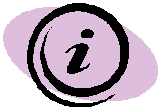
PROVIDER SERVICES
Return to Table of Contents
Missing Issues?
The Medicaid Update, now indexed by subject area, can be accessed online at the New York State Department of Health website:
http://www.health.state.ny.us/health_care/medicaid/program/main.htm
Hard copies can be obtained upon request by calling (518) 474-9219.
Would You Like Future Updates Emailed To You?
Email your request to our mailbox, MedicaidUpdate@health.state.ny.us
Let us know if you want to continue receiving the hard copy in the mail in addition to the emailed copy.
Do You Suspect Fraud?
If you suspect that a recipient or a provider has engaged in fraudulent activities, please call the fraud hotline at: 1-877-87FRAUD. Your call will remain confidential.
As a Pharmacist, Where Can I Access the List of Medicaid Reimbursable Drugs?
The list of Medicaid reimbursable drugs is available at: http://www.eMedNY.org/info/formfile.html
Questions About an Article?
For your convenience each article contains a contact number for further information, questions or comments.
Do You Want Information On Patient Educational Tools and Medicaid's Disease Management Initiatives?
Contact Department staff at (518) 474-9219.
Questions About HIPAA?
Please contact the HIPAA Support Helpline at (800) 522-5518 or (518) 447-9860.
Address Change?
Please contact the Bureau of Medical Review and Payment at:
Fee-for-Service Provider Enrollment Unit, (518) 486-9440
Rate Based Provider Unit, (518) 474-8161
Billing Question? Call Computer Sciences Corporation:
Provider Services (800) 522-5518 or (518) 447-9860.
Comments and Suggestions Regarding This Publication?
Please contact the editor, Timothy Perry-Coon at MedicaidUpdate@health.state.ny.us or via telephone at (518) 474-9219 with your concerns.
The Medicaid Update: Your Window Into The Medicaid Program
The State Department of Health welcomes your comments or suggestions regarding the Medicaid Update.
Please send suggestions to the editor, Timothy Perry-Coon:
NYS Department of Health
Office of Medicaid Management
Bureau of Program Guidance
99 Washington Ave., Suite 720
Albany, NY 12210
(e-mail MedicaidUpdate@health.state.ny.us)
The Medicaid Update, along with past issues of the Medicaid Update, can be accessed online at the New York State Department of Health web site: http://www.health.state.ny.us/health_care/medicaid/program/main.htm